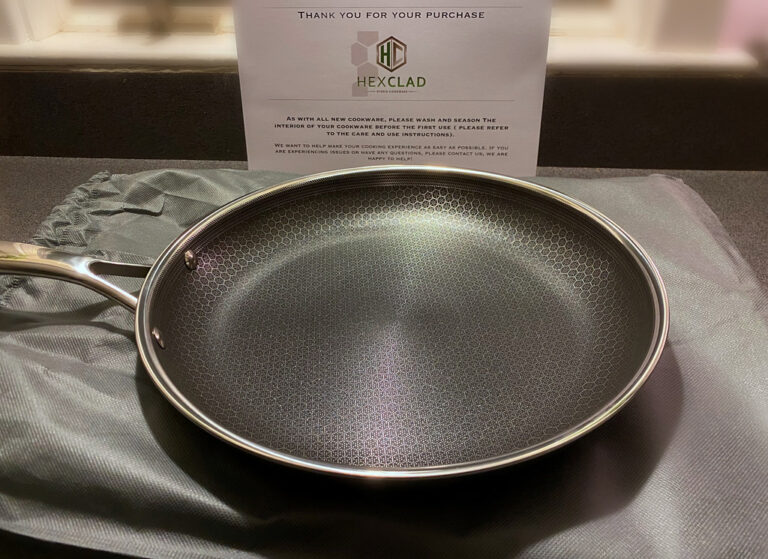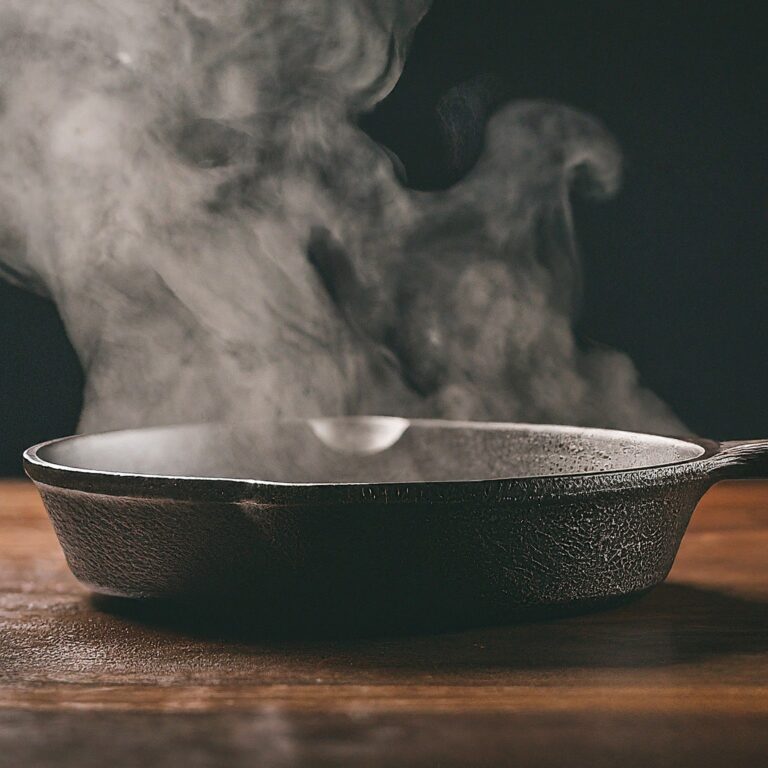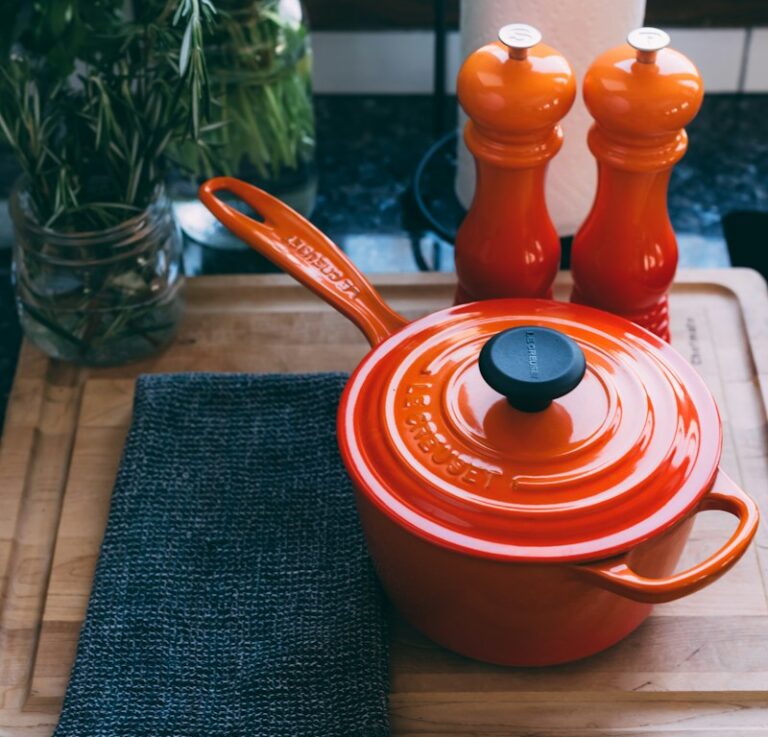I’m here to show you how to properly measure a springform pan. It’s essential to get the measurements right, so your recipe turns out just the way you want it.
In this article, I’ll walk you through the tools you’ll need and guide you step by step on measuring the diameter, depth, and even the non-stick coating of your pan.
Plus, I’ll share tips for adjusting measurements for different pan sizes and common mistakes to avoid.
Let’s get started!
Key Takeaways
- Proper measurements are crucial for achieving desired baking results.
- The size of the springform pan determines the thickness and evenness of baked goods.
- Accurate measurements maintain the balance between flavors and textures.
- Precision in measuring ensures cakes don’t overflow or collapse during baking.
The Importance of Proper Measurements
You’ll want to pay attention to the importance of proper measurements when using a springform pan. Measuring techniques are crucial in achieving the desired results for your baking endeavors. Precision plays a key role in ensuring that your cake or cheesecake turns out perfectly.
When measuring ingredients, accuracy is vital to maintain the balance between flavors and textures. Using too much or too little of an ingredient can drastically affect the final outcome.
The size of your springform pan is also crucial, as it determines the thickness and evenness of your baked goods. Making sure you have the correct size ensures that your cake bakes evenly and doesn’t overflow or collapse during baking.
With proper measuring techniques and precision, you can achieve delicious and visually appealing treats every time.
Tools Needed for Measuring
When it comes to achieving accurate measurements, there are a few tips that I’ve found helpful.
First, always make sure to use the right tools for the job.
Secondly, take your time and double-check your measurements to ensure precision.
Lastly, consider investing in quality measuring tools as they can greatly improve accuracy and make your cooking experience much smoother.
Measuring Accuracy Tips
To ensure accurate measurements for your springform pan, it’s important to use a ruler or measuring tape that is properly calibrated.
When it comes to baking, precise measurements are crucial for achieving the perfect texture and taste.
To measure accurately for baking, I always follow a few key techniques.
First, I make sure to level off dry ingredients like flour or sugar with a straight edge. This helps me avoid adding too much or too little of these ingredients, which can affect the final result.
Additionally, when measuring liquids, I place the measuring cup on a flat surface and bend down to read the measurement at eye level. This ensures that I get an accurate reading without any guesswork.
Choosing the Right Tools
Having the right tools is essential for accurate baking measurements. When it comes to measuring technique tips, choosing the right materials plays a crucial role in achieving precise results.
For dry ingredients, I always use a set of measuring cups made from durable plastic or stainless steel. These cups come in different sizes and have clear markings for easy measurement.
When it comes to liquids, a glass or plastic liquid measuring cup with a spout is my go-to choice. It allows me to pour and measure without any spills or messes.
Additionally, investing in a good quality digital kitchen scale can be incredibly helpful for weighing ingredients accurately, especially when it comes to baking recipes that require precise measurements.
Ultimately, having reliable and appropriate measuring tools ensures consistent and delicious baked goods every time!
Measuring the Diameter of the Pan
When it comes to measuring the diameter of a pan, accuracy is key. To ensure precise measurements, you’ll need specific tools such as a ruler or tape measure.
Common pan sizes can vary, so it’s important to have the right measurements before proceeding with any recipes or baking instructions.
Accurate Pan Diameter
Make sure you’re using the correct pan diameter for accurate measurements. It’s important to get the right size so that your recipes turn out just right. When measuring the circumference of a springform pan, wrap a flexible tape measure around the widest part of the pan and note down the measurement. This will give you an accurate idea of how big your pan is.
Additionally, don’t forget to measure the height of your springform pan as well. Use a ruler or measuring tape to measure from the base to the top edge of the pan. Knowing both the diameter and height will help you choose recipes that fit perfectly in your springform pan and ensure delicious results every time.
- Tips for measuring circumference:
- Wrap a flexible tape measure around
- Note down the measurement accurately
- Tips for measuring height:
- Use a ruler or measuring tape
- Measure from base to top edge
Measuring Tools Needed
To accurately measure your baking ingredients, you’ll need a few essential tools. Measuring cups and spoons are the go-to tools for measuring dry ingredients like flour and sugar. A kitchen scale is also handy for precise measurements, especially when it comes to liquids or ingredients with varying densities.
Here’s a table that illustrates the different measuring tools and their uses:
| Tool | Use |
|---|---|
| Measuring Cups | Measure dry ingredients in cups |
| Measuring Spoons | Measure smaller amounts of dry ingredients or liquids in teaspoons or tablespoons |
| Kitchen Scale | Weigh both dry and liquid ingredients |
Using these tools correctly is essential for accurate measurements. When troubleshooting measurements, make sure to level off your dry ingredient measurements with a straight edge, such as a knife, to ensure consistency. Additionally, when using a measuring cup for liquids, bend down to eye-level to avoid any misjudgments caused by an angled view.
Common Pan Sizes
You’ll find a variety of common pan sizes in most kitchen stores. When it comes to baking, having the right size pan can make all the difference in your final result.
Here are some common pan sizes that you may come across:
- Round pans:
- 8-inch: Perfect for small cakes or layered desserts
- 9-inch: The go-to size for many recipes, great for everyday baking
- Square pans:
- 9-inch: Ideal for brownies and bar cookies
- 13×9-inch: A versatile size, perfect for sheet cakes or casseroles
Measuring the volume of your pan is crucial when calculating baking time. You can easily measure it by filling the pan with water and pouring it into a measuring cup. Once you know the volume, you can adjust your recipe accordingly and ensure even baking throughout.
Measuring the Depth of the Pan
It’s important to accurately measure the depth of your springform pan before starting your recipe. One crucial step is measuring the circumference accurately. To do this, I take a flexible tape measure and wrap it around the outer edge of the pan, making sure it fits snugly. This gives me an accurate measurement of the circumference, which helps determine the size of crust or filling needed for my recipe.
Another aspect to consider is measuring the volume of the pan. This can be done by pouring water into the pan until it reaches a certain level, then carefully pouring that water into a measuring cup. By doing this, I can determine how much batter or mixture I will need to fill my springform pan without overflowing or underfilling it.
Accurately measuring both the circumference and volume ensures that my recipe turns out just right in my springform pan every time.
Understanding Metric Measurements
When it comes to measuring, there are two main systems to consider: Metric and Imperial.
Metric measurements are widely used across the globe, while Imperial measurements are primarily used in the United States.
Understanding the differences between these two systems and knowing how to convert between them can be incredibly helpful when working with recipes or conducting scientific experiments.
In this discussion, we will delve into the nuances of Metric Vs. Imperial and explore some common metric conversions that everyone should know.
Metric Vs. Imperial
The metric system is commonly used in many countries, while the imperial system is primarily used in the United States. As someone who grew up using the metric system, I find it more practical and easier to understand.
When it comes to measuring weight, I prefer using grams and kilograms because they provide a more precise measurement compared to pounds and ounces. Converting recipes from metric to imperial can be a bit tricky at times, but with practice, it becomes second nature.
Here are a few tips on converting recipes:
- Use an online conversion tool or chart for accurate measurements.
- Remember that 1 kilogram is approximately equal to 2.2 pounds.
- For smaller quantities, use fractions or decimals for precision.
Common Metric Conversions
To convert Celsius to Fahrenheit, multiply the temperature by 9/5 and add 32.
When it comes to measuring liquid ingredients, I prefer using a measuring cup with clear markings for accurate results. It’s important to pour the liquid into the cup and check at eye level to ensure accuracy.
For dry ingredients, I use measuring spoons or cups depending on the quantity needed. To measure smaller amounts, I scoop the ingredient into the spoon and level it off with a straight edge. For larger quantities, like flour or sugar, I use a measuring cup and gently fill it without packing too tightly.
These precise measurements are crucial in achieving consistent results when cooking or baking.
Converting Metric to Imperial Measurements
Converting metric to imperial measurements can be done easily using a conversion chart. As someone who grew up in a country that primarily uses the metric system, I understand the challenges of converting measurements when following recipes or working with tools that use imperial units.
Here are some tips and tricks that have helped me navigate this conversion process:
- Understanding Metric Measurements:
- Familiarize yourself with common metric units like grams, kilograms, milliliters, and liters.
- Remember that prefixes such as centi-, kilo-, and milli- indicate decimal relationships between units.
- Converting Metric to Imperial Measurements:
- Use a conversion chart or online calculator to convert values accurately.
- Start by identifying the equivalent imperial unit for the metric measurement you need to convert.
Measuring for a Perfect Fit
Measuring for a perfect fit can be tricky, but with some practice and the right tools, you’ll be able to achieve accurate measurements. When it comes to measuring for different shapes, like springform pans used in cheesecake recipes, it’s important to get the dimensions just right. To help you out, here’s a simple table that outlines the recommended sizes for common springform pan diameters:
| Pan Diameter (inches) | Recommended Measured Size (inches) |
|---|---|
| 6 | 6-5/8 |
| 8 | 8-3/4 |
| 10 | 10-1/2 |
Tips for Accurate Measurements
When it comes to achieving accurate measurements, make sure you have the right tools on hand for the job. Measuring techniques play a crucial role in obtaining precise results.
Here are some tips for accurate measurements:
- Use precision measuring tools:
- Invest in a high-quality tape measure or ruler.
- Consider using digital calipers for more intricate measurements.
Take your time:
- Rushing through measurements can lead to errors.
- Be patient and ensure that you’re taking each measurement carefully.
By following these tips and utilizing precision measuring tools, you can improve the accuracy of your measurements.
Whether it’s for cooking, crafting, or any other task that requires precise measurements, having the right techniques and tools will help you achieve success.
Measuring the Non-Stick Coating
To ensure the longevity of your non-stick coating, make sure to follow proper care instructions and avoid using metal utensils that can scratch the surface. But how do you measure the durability of a non-stick coating? One way is by measuring the thickness of the coating. The thicker the coating, the more durable it tends to be. Manufacturers typically specify the thickness of their non-stick coatings in microns (μm). A micron is equal to one millionth of a meter, so smaller numbers indicate thinner coatings. To give you an idea, here’s a table showing different non-stick coatings and their corresponding thickness measurements:
| Non-Stick Coating | Thickness (μm) |
|---|---|
| Teflon | 25-35 |
| Ceramic | 10-20 |
| Silicone-based | 5-15 |
Measuring for Different Recipes
If you’re following a recipe, it’s important to accurately gauge the amount of each ingredient. This holds true especially when measuring for cheesecake or quiche. As someone who loves baking, I’ve learned a few tricks along the way to ensure my desserts come out perfectly every time.
When measuring for cheesecake:
- Measure the cream cheese by weight rather than volume to ensure accuracy.
- Use a kitchen scale to weigh the ingredients precisely.
When measuring for quiche:
- Pay attention to the size of your springform pan and adjust the recipe accordingly.
- Fillings like vegetables and cheese can be measured using cups or spoons.
Adjusting Measurements for Different Pan Sizes
To adjust your measurements for different pan sizes, simply use a conversion chart or ratio to ensure your dish turns out perfectly. Measuring for different shaped pans can be tricky, but with the right tools and techniques, it’s easy to make adjustments. For example, if you’re baking a cake in a round pan instead of a square one, you may need to decrease the cooking time slightly to account for the difference in surface area. Additionally, adjusting measurements for altitude is important when baking at higher elevations. The lower air pressure at high altitudes can cause baked goods to rise more quickly and then collapse. To combat this, you may need to decrease leavening agents like baking powder or increase the liquid ingredients in your recipe.
Here’s an example conversion chart that can help guide you when adjusting measurements for different pan sizes:
| Pan Size | Conversion Ratio |
|---|---|
| 9-inch | 1:1 |
| 8-inch | 0.89:1 |
| 6-inch | 0.67:1 |
Common Mistakes to Avoid When Measuring
When it comes to measuring ingredients for different desserts, there are some common mistakes that can easily be avoided. As someone who loves baking, I’ve certainly made my fair share of measuring errors. But over time, I’ve learned a few tricks to troubleshoot and prevent these mishaps:
- Using the wrong measuring tools: – Make sure to use the appropriate measuring cups and spoons for liquids and dry ingredients separately. Invest in a kitchen scale for more accurate measurements.
- Not leveling off ingredients properly: Use the back of a knife or a straight edge to level off dry ingredients. For liquids, check that they reach the correct line on your measuring cup at eye level.
Conclusion
So there you have it, measuring a springform pan is not as complicated as it may seem. By using the right tools and understanding the proper measurements, you can ensure that your recipes turn out perfectly every time.
Whether you’re making a cheesecake or a savory tart, taking accurate measurements of your pan is essential for success in the kitchen.
So don’t be afraid to break out the ruler and get measuring! Happy baking!




